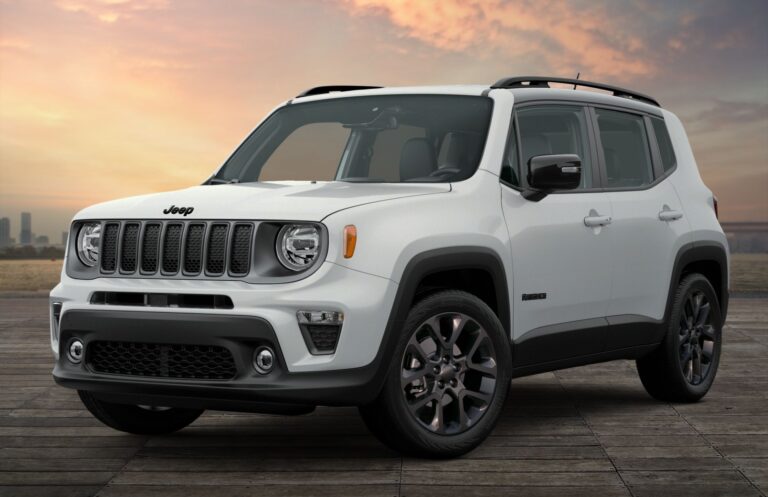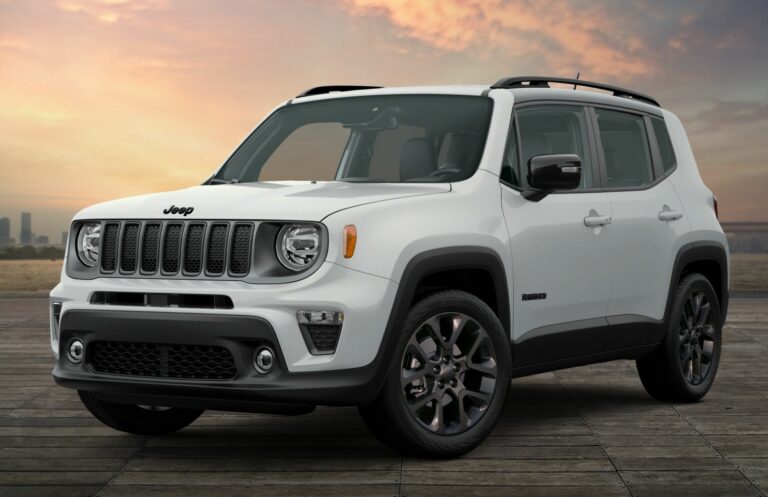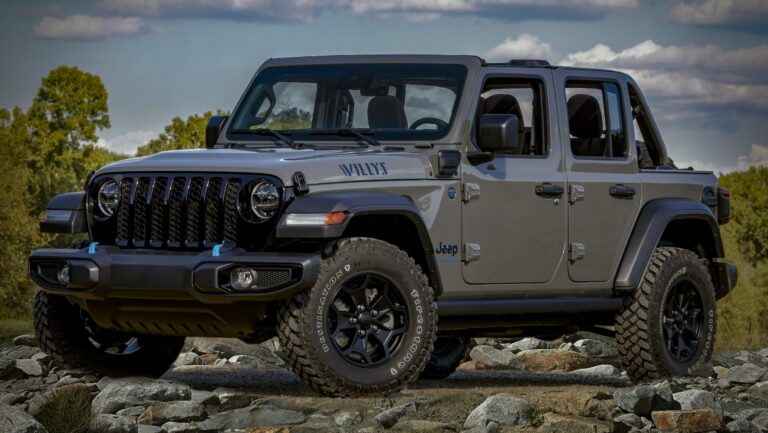Jeep Forward Control Van For Sale: A Comprehensive Buyer’s Guide
Jeep Forward Control Van For Sale: A Comprehensive Buyer’s Guide jeeps.truckstrend.com
The automotive landscape is vast, filled with countless makes and models. Yet, every so often, a vehicle emerges that transcends mere transportation, becoming a cultural icon, a testament to rugged utility, and a canvas for customization. The Jeep Forward Control (FC) van is precisely one such vehicle. For those with an appreciation for vintage industrial design, unparalleled off-road capability, and a desire to own a truly unique piece of automotive history, a Jeep Forward Control van for sale represents more than just a purchase—it’s an investment in a legend.
This comprehensive guide aims to illuminate every facet of acquiring one of these distinctive machines. Whether you’re a seasoned collector, an off-road enthusiast, or simply someone captivated by the FC’s unique charm, understanding its nuances is key to a successful acquisition.
Jeep Forward Control Van For Sale: A Comprehensive Buyer’s Guide
What Makes the Jeep FC So Special? A Glimpse into its Legacy
Born from the utilitarian spirit of the post-war era, the Jeep Forward Control series was Willys Motors’ ambitious venture into the commercial truck market. Designed by industrial designer Brooks Stevens, the FC series, introduced in 1956, stood out with its unconventional cab-over-engine (COE) design. This innovative layout maximized cargo space within a compact wheelbase, offering superior maneuverability and visibility compared to conventional truck designs of the time.
The FC’s unique aesthetic—a short, stubby nose with a panoramic windshield and a flat, boxy body—was polarizing but undeniably functional. Built on existing CJ-5 and CJ-6 chassis components, the FC inherited Jeep’s legendary 4×4 capability, making it an incredibly versatile workhorse equally at home on construction sites, farms, or remote trails. It was offered in various configurations, including pickups, stake beds, and chassis-cab models, laying the groundwork for the rare and highly sought-after van body, which was often a custom upfit or specialized variant. Its rugged simplicity, coupled with its distinctive looks, has cemented its place as a cult classic.
Models and Generations: Navigating the FC Family Tree
While the term "Jeep Forward Control Van" often refers to the enclosed box-body variants, it’s important to understand the core models from which these vans originated:
- FC-150 (1956-1965): The smaller of the two primary models, the FC-150 was built on an 81-inch wheelbase, sharing components with the CJ-5. It typically featured a 134 cu in (2.2 L) F-head "Hurricane" four-cylinder engine. Its compact size made it nimble, perfect for tight spaces.
- FC-170 (1957-1965): A larger, heavier-duty model, the FC-170 rode on a 103.5-inch wheelbase and often came with a 226 cu in (3.7 L) Super Hurricane I-6 engine. It boasted a higher payload capacity and was more commonly seen in commercial applications, making it a more robust platform for van conversions.
- Specialized and Custom Van Bodies: Unlike modern vans produced on an assembly line, many Jeep FC vans were either specialized factory-built variants (e.g., mail delivery, ambulance, or utility service bodies) or custom conversions performed by third-party coachbuilders. This means that finding two identical FC vans can be challenging, and each might have unique characteristics based on its original purpose or subsequent modifications.

Understanding these distinctions is crucial when searching for a Jeep Forward Control van for sale, as it influences everything from dimensions and powertrain to potential parts availability.
Why Buy a Jeep FC Van? More Than Just a Vehicle
The allure of the Jeep FC van extends far beyond its historical significance. For potential buyers, the reasons are manifold:
- Unrivaled Utility and Versatility: With its flat-load floor and expansive interior space, the FC van is a blank canvas. It can be transformed into an overlanding rig, a unique camper van, a mobile workshop, a quirky food truck, or even a promotional vehicle that guarantees attention.
- Iconic and Unique Styling: In a sea of modern, aerodynamic vehicles, the FC stands out instantly. Its retro-futuristic, industrial design is a head-turner and a conversation starter, offering a distinct personality that modern vans simply can’t replicate.
- Legendary Off-Road Capability: Inheriting Jeep’s renowned 4×4 system, the FC van is incredibly capable off the beaten path. Its short overhangs and excellent ground clearance make it surprisingly agile in challenging terrain, a rare trait for a vehicle of its size and purpose.
- Investment Potential: Well-preserved or expertly restored Jeep FCs, especially the rarer van configurations, are steadily appreciating in value. They are not just vehicles; they are collectible assets that can offer a return on investment over time.
- Customization Heaven: For those who love to wrench and personalize, the FC offers endless possibilities. From engine swaps to interior overhauls, its simple, robust platform invites creative modifications.
Where to Find a Jeep Forward Control Van For Sale
Locating a Jeep FC van can be an adventure in itself, given their age and rarity. Here are the primary avenues to explore:
- Online Marketplaces: Websites like eBay Motors, Bring a Trailer (for higher-end examples), Craigslist, Facebook Marketplace, and dedicated classic car sales platforms (e.g., Hemmings, ClassicCars.com) are excellent starting points. Use specific search terms like "Jeep FC van," "Willys FC van," or "Jeep Forward Control."
- Classic Car Dealers and Brokers: Some specialized dealerships focus on vintage 4x4s and utility vehicles. They often have a curated inventory and may even be able to source an FC van for you.
- Auctions: Live and online classic car auctions can be a good source, though prices can be competitive. Be prepared to act quickly and have your inspection pre-arranged.
- Online Forums and Social Media Groups: Dedicated Jeep FC enthusiast forums and Facebook groups are invaluable resources. Members often post about vehicles for sale, and you can tap into a network of knowledgeable individuals for leads and advice.
- Word-of-Mouth: Attending classic car shows, swap meets, and vintage Jeep events can lead to unexpected discoveries. Sometimes, the best finds come from people who know someone selling one.
Key Considerations Before Buying Your FC Van
Purchasing a vintage vehicle, especially one as unique as the FC, requires careful consideration.
- Rust is the Enemy: The biggest challenge with any vintage steel vehicle is rust. Pay particular attention to the frame, floor pans, cab mounts, and any areas where water might collect. Extensive rust repair can be incredibly costly and time-consuming.
- Drivetrain Condition: Inspect the engine, transmission, transfer case, and axles. Look for leaks, listen for unusual noises, and inquire about maintenance history. Original powertrains are robust but may require rebuilding.
- Parts Availability: While mechanical components (engine, transmission, axles) often shared with other Jeeps are relatively available, body panels and specific FC-only parts can be scarce and expensive. Factor this into your budget for restoration or repairs.
- Electrical System: Original 6-volt or early 12-volt systems can be temperamental. Assess the wiring for signs of deterioration, modifications, or fire hazards.
- Brakes and Steering: These are crucial for safety. Ensure the braking system is functional and the steering has minimal play. Upgrades to modern disc brakes and power steering are common and highly recommended for daily driving.
- Title and Documentation: Verify the vehicle’s title is clear and matches the VIN. Missing or incorrect paperwork can lead to significant headaches.
- Professional Inspection: Always, always, always get a pre-purchase inspection by a mechanic familiar with vintage vehicles, ideally vintage Jeeps. They can spot issues that an untrained eye might miss.
Restoration vs. Driver: What’s Your Goal?
When you find a Jeep Forward Control van for sale, it will generally fall into one of three categories:
- Project/Parts Donor: These are vehicles that require extensive work, often including major rust repair, powertrain rebuilds, and complete interior/exterior overhauls. They are typically the most affordable but demand the most time, skill, and financial investment. Ideal for experienced restorers or those seeking a complete custom build.
- Driver Quality: These FCs are functional and roadworthy, though they may have cosmetic imperfections, minor mechanical quirks, or non-original parts. They can be enjoyed immediately and slowly improved over time. They represent a good balance of cost and usability.
- Restored/Show Quality: These vehicles have undergone professional, comprehensive restorations to original specifications or to a high-quality custom build. They command the highest prices but offer a turn-key experience and often a significant investment in parts and labor already completed.
Your budget, mechanical aptitude, and intended use will dictate which category is right for you.
Tips for a Successful Purchase
- Set a Realistic Budget: Beyond the purchase price, factor in transportation, insurance, initial repairs, potential upgrades (e.g., power steering, disc brakes), and ongoing maintenance.
- Do Your Homework: Research common FC issues, understand the different models, and educate yourself on fair market values based on condition.
- Be Patient: Finding the right FC van can take time. Don’t rush into a purchase.
- Communicate Clearly: Ask the seller detailed questions about the vehicle’s history, condition, and any known issues. Request plenty of photos and videos.
- Negotiate Wisely: Be prepared to negotiate, especially if you’ve identified areas requiring significant investment.
- Join the Community: Connect with other FC owners. Their collective knowledge and experiences are invaluable.
Potential Challenges and Solutions
Owning a vintage vehicle like the FC comes with its unique set of challenges, but most have solutions:
- Parts Scarcity: Original body parts can be hard to find.
- Solution: Network with other owners, search specialized online retailers (e.g., Kaiser Willys Auto Supply), attend swap meets, or consider custom fabrication. Many mechanical parts are shared with other Jeeps.
- Specialized Mechanics: Not every mechanic knows how to work on vintage vehicles, especially unique ones like the FC.
- Solution: Seek out mechanics specializing in classic cars or 4x4s. Learning basic maintenance and repairs yourself can save money and provide a deeper understanding of your vehicle.
- Rust Repair Costs: Extensive rust can quickly make a "bargain" FC very expensive.
- Solution: Prioritize vehicles with minimal rust. If tackling a rusty project, budget generously for professional metalwork or invest in welding and fabrication skills yourself.
- Modern Driving Expectations: FCs don’t drive like modern vehicles. They’re slower, louder, and require more effort.
- Solution: Embrace the vintage driving experience. For more comfortable highway driving, consider upgrades like an engine swap, transmission upgrade, power steering, and disc brakes, but be aware these alter originality.
Price Table: Jeep Forward Control Van For Sale (Estimated Ranges)
Please note that these prices are highly variable based on geographical location, specific model (FC-150 vs. FC-170, or specialized body type), original purpose, and the unique history of each vehicle. These are broad estimates.
| Condition Category | Description | Estimated Price Range (USD) |
|---|---|---|
| Parts Donor / Project | Significant rust, non-running or major mechanical issues, incomplete. Requires full restoration. | $5,000 – $15,000 |
| Driver Quality | Running and driving, roadworthy with minor issues, some rust, possibly non-original paint/interior. | $15,000 – $35,000 |
| Well-Preserved Original | Running, mostly original, minimal rust, good overall condition, but not fully restored. | $30,000 – $50,000+ |
| Restored / Show Quality | Professionally restored to original specifications or high-quality custom build, excellent condition. | $50,000 – $100,000+ |
| Rare/Specialized Models | Factory-built specialized bodies (e.g., original ambulances, fire trucks, unique utility vans). | Varies greatly, often higher |
Disclaimer: These are rough estimates and market values fluctuate. Always conduct thorough research and inspections.
Frequently Asked Questions (FAQ) about Jeep Forward Control Vans
Q1: Are Jeep FC vans reliable for daily driving?
A1: While robustly built, FC vans are vintage vehicles. With proper maintenance, they can be reliable. However, they lack modern comforts and safety features, and their performance is modest by today’s standards. Many owners perform upgrades (e.g., 12V conversion, disc brakes, power steering) to improve daily drivability.
Q2: What’s the fuel economy like?
A2: Don’t expect great fuel economy. Depending on the engine (F-head 4-cyl or I-6) and drivetrain, you’ll likely see mileage in the low teens (10-15 MPG), or even single digits with larger engines or heavy loads.
Q3: Can I easily get parts for a Jeep FC?
A3: Mechanical parts (engine, transmission, transfer case, axles) often shared with other Jeeps of the era are relatively available through specialized vintage Jeep parts suppliers. However, FC-specific body panels, interior trim, and unique glass can be very difficult and expensive to find, sometimes requiring custom fabrication.
Q4: Is the FC van safe in a crash?
A4: As a vehicle from the 1950s/60s, the FC van lacks modern safety features like airbags, crumple zones, or advanced braking systems. The cab-over design offers minimal front impact protection. Driving defensively and maintaining the vehicle’s mechanical integrity is paramount.
Q5: Are there any common rust areas I should check?
A5: Yes, critical areas include: cab floorboards, cab mounts, rocker panels, lower door seams, front wheel wells, bed supports (on pickup variants, but still relevant for frame integrity), and frame rails. Any place water can pool is a potential rust spot.
Q6: What’s the difference between an FC-150 and an FC-170?
A6: The FC-150 is the smaller model with an 81-inch wheelbase and a 4-cylinder engine, while the FC-170 is larger with a 103.5-inch wheelbase and typically a 6-cylinder engine, offering higher payload capacity. Van bodies were often based on the FC-170 due to its size and payload.
Q7: Can I put a modern engine in an FC van?
A7: Yes, engine swaps are a very common modification to improve power, reliability, and sometimes fuel economy. Popular swaps include modern Jeep engines (e.g., 4.0L I6), small-block V8s, or even diesel engines. This requires significant fabrication and mechanical work.
Conclusion: Embarking on Your FC Journey
The Jeep Forward Control van for sale is more than just a listing; it’s an invitation to own a piece of automotive history. Its distinctive design, legendary 4×4 capability, and immense potential for customization make it a truly compelling choice for the discerning enthusiast. While acquiring and maintaining an FC requires patience, research, and often a significant investment of time and resources, the rewards are immeasurable.
Whether you envision it as a rugged overlander, a unique mobile business, or a show-stopping classic, the FC van promises a driving experience unlike any other. It’s a journey into a bygone era of industrial design and no-nonsense utility, culminating in the deep satisfaction of preserving and enjoying a vehicle that continues to turn heads and inspire admiration decades after its production. For those ready to embrace its quirks and celebrate its legacy, the Jeep Forward Control van awaits its next adventure.





